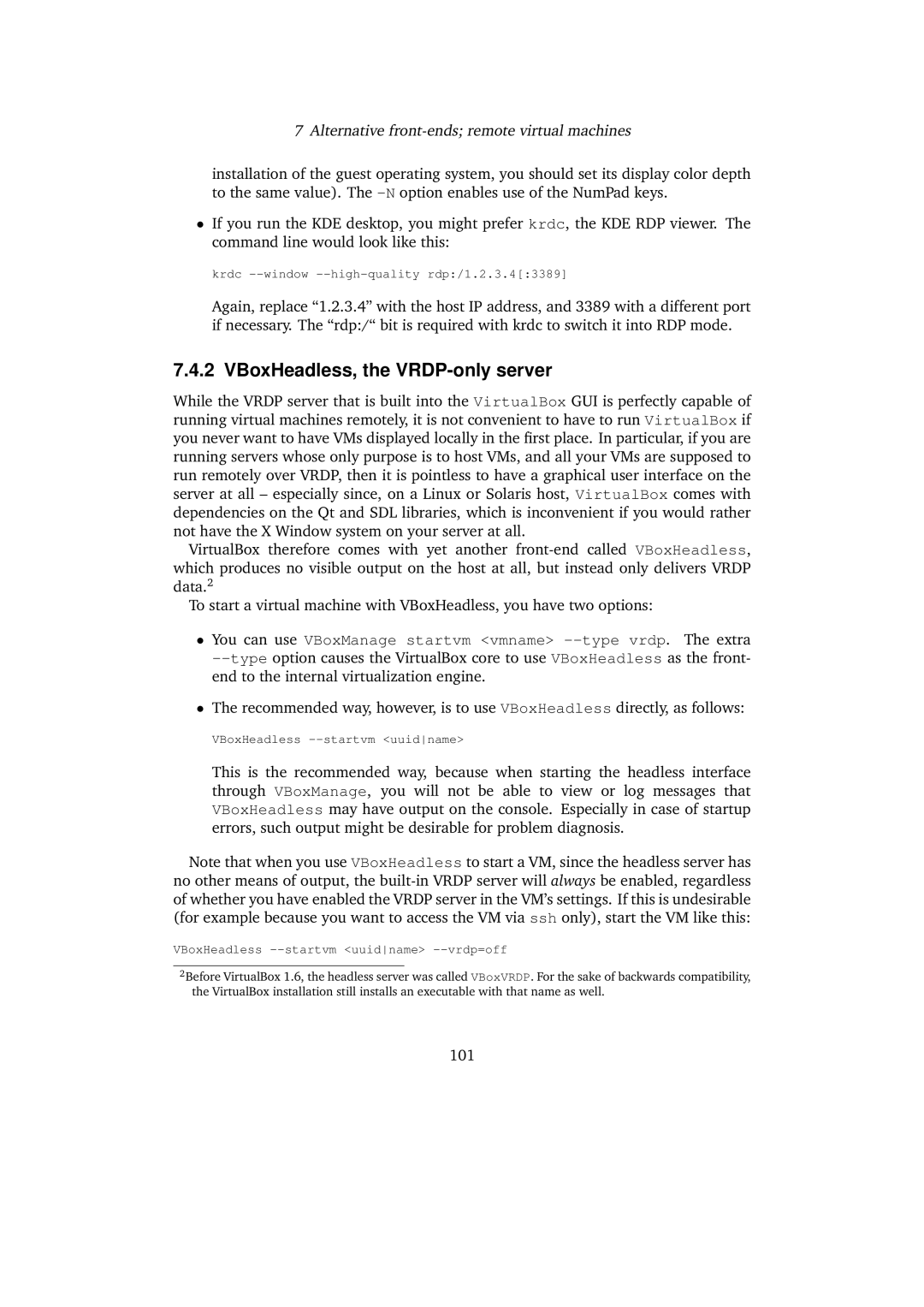7 Alternative
installation of the guest operating system, you should set its display color depth to the same value). The
•If you run the KDE desktop, you might prefer krdc, the KDE RDP viewer. The command line would look like this:
krdc
Again, replace “1.2.3.4” with the host IP address, and 3389 with a different port if necessary. The “rdp:/“ bit is required with krdc to switch it into RDP mode.
7.4.2 VBoxHeadless, the VRDP-only server
While the VRDP server that is built into the VirtualBox GUI is perfectly capable of running virtual machines remotely, it is not convenient to have to run VirtualBox if you never want to have VMs displayed locally in the first place. In particular, if you are running servers whose only purpose is to host VMs, and all your VMs are supposed to run remotely over VRDP, then it is pointless to have a graphical user interface on the server at all – especially since, on a Linux or Solaris host, VirtualBox comes with dependencies on the Qt and SDL libraries, which is inconvenient if you would rather not have the X Window system on your server at all.
VirtualBox therefore comes with yet another
To start a virtual machine with VBoxHeadless, you have two options:
•You can use VBoxManage startvm <vmname>
•The recommended way, however, is to use VBoxHeadless directly, as follows:
VBoxHeadless
This is the recommended way, because when starting the headless interface through VBoxManage, you will not be able to view or log messages that VBoxHeadless may have output on the console. Especially in case of startup errors, such output might be desirable for problem diagnosis.
Note that when you use VBoxHeadless to start a VM, since the headless server has no other means of output, the
VBoxHeadless
2Before VirtualBox 1.6, the headless server was called VBoxVRDP. For the sake of backwards compatibility, the VirtualBox installation still installs an executable with that name as well.
101
